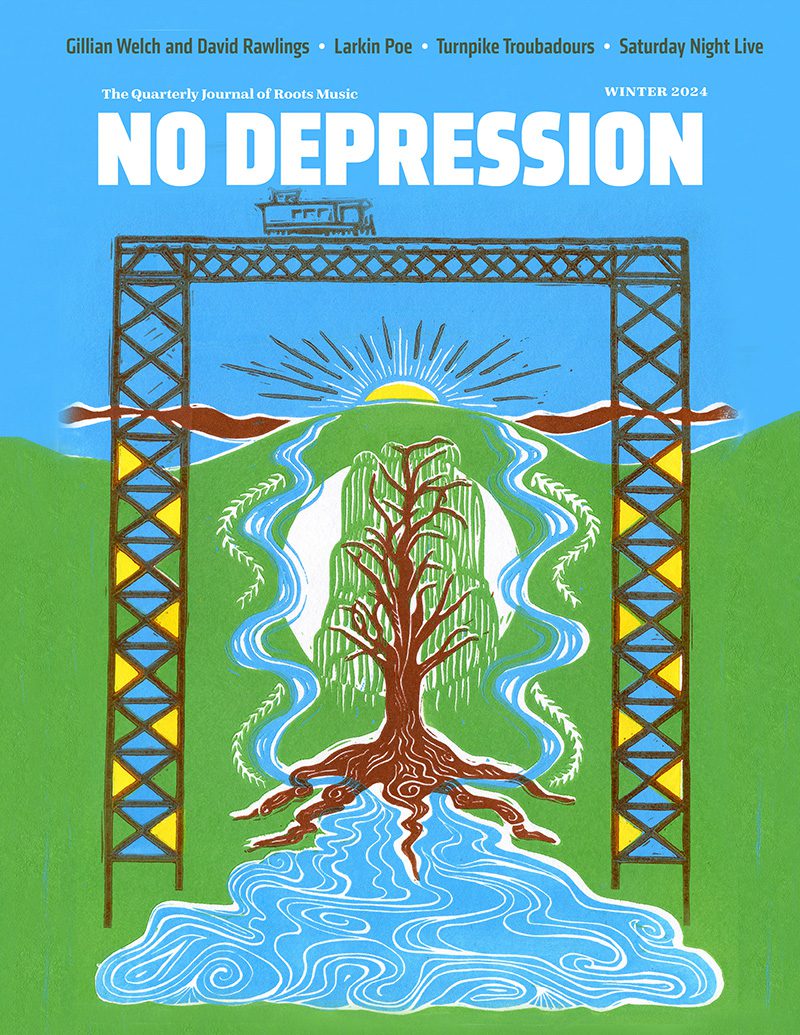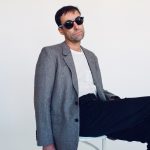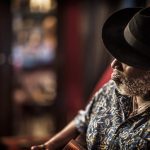Dexter Payne: Jazz For All and Everywhere (Almost)
Back in the mid-1970s, there was a regular Sunday night jam session at The Colorado Coal Company, a roadhouse on North Broadway just outside of Boulder, Colorado. When his turn came up, saxophonist, clarinetist, and harmonica player Dexter Payne would often step up to the mic for a solo spot and deliver a droll take on Chuck Berry’s “You Never Can Tell.” At the time, Payne was a member of his wife Judy Roderick’s band. Based in Boulder after making her mark on the ’60s folk scene, Roderick was a stunning blues and roots music vocalist who had, like so many of her contemporaries, transformed into a powerful blues/country-rocker.
Eventually Roderick and Payne moved to Montana, and, for a number of years, he was an integral member of the blues/jazz/western swing outfit The Big Sky Mudflaps, with Roderick regularly joining in as a featured guest. In the early 1980s, Payne began helping Roderick engineer a comeback that included a recording session with Dr. John and a jam session with Jay McShann. Sadly, Roderick passed away before she could achieve the popular success her talent deserved. Payne headed back to Boulder and joined forces with guitarist and singer Don “BBQ Bob” DeBacker and drummer Eugene Smith to form a dynamic country blues trio that crisscrossed the Rocky Mountains and Deep South. Since that band broke up in 1997, Payne’s musical and physical journeys into roots music have taken on a distinctly global character, and the latest incarnation of his quest for compelling grooves and outlets for improvisation takes him to Brazil for a jazz-based exploration of the Brazilian choro style and other roots genres like forró and xote, documented on his second CD as a leader, Jazz For All (Jazz Forró) on Dexofon Records.
Payne’s passion for Brazilian roots music began while he was in Boulder working with the BBQ Bob Blues Trio: “In ’94, I met this guy here in Boulder, Mitchell Long, who’s now in LA, a world class guitarist. Mitchell was really into Brazilian music, and he turned me on to Paulo Moura, and suddenly I had a new hero. Paulo Moura is a great, great clarinet player that passed away about three years ago, and it sort of all came together for me because I has always loved playing clarinet, but it was kind of a novelty. I mostly played saxophone and harmonica. I liked playing traditional jazz from New Orleans, but chances to do that were so slim. You had to have white shoes and a white belt and wait for someone to die to have a place in a band to play trad jazz. It wasn’t an avenue, and suddenly I discovered this whole tradition in Brazil of clarinet. It’s a viable instrument there. So, I started studying choro, and it was difficult. It’s like studying classical music for me. It was one song at a time for me for weeks. I started digging into that, and, simultaneously, I started that trip.”
Choro is a largely instrumental street music that emerged in the nineteenth century and is roughly a Brazilian equivalent to traditional New Orleans jazz. As Payne explains: “It bridges the gap between ragtime and trad jazz. There was a piano player in Brazil in the late 1800s; his name is Ernesto Nazareth. There is story that he met Gottschalk [the first renowned American classical music composer, who was influenced by the African rhythms played in New Orleans’ Congo Square], who made a legendary tour of Brazil. Nazareth was writing songs he called ‘Tango Brasiliero,’ and they wound up being some of the first choros. So, by the 1900s, choro was off and running, and it became this kind of street music of really highly skilled musicians starting in Rio, mostly people who could read music and who could blow their asses off. A lot of choro is played traditionally without improvisation at all, but it flourished and became a vehicle for improvisation and really was one of the original underpinnings of samba and, certainly, bossa nova.” “That trip” that Payne refers to is his two-and-a-half-year journey performing his way through Mexico with side trips to Cuba, where he performed with pre-Buena Vista Social Club-fame artists like pianist Ruben Gonzales and bassist Orlando “Cachaito” López, as well as stops in Honduras, Nicaragua Costa Rica, Panama, and Venezuela.
His ultimate destination was Brazil and the opportunity to play choro music: “It took me a year to get across Mexico, but every place I was playing when I was sitting at home in the hotel or my apartment, I was practicing choro.” The dedicated preparation paidoff: “I arrived in Manaus speaking no Portuguese and recognizing the culture in Brazil was very different from the Hispanic culture I’d seen for a year and a half. So, I decided to play on the street. I didn’t want to go downtown; I didn’t have the nerve for that, so I went off in a little park out in a residential area and started playing choro, and nobody paid any attention. People just walked by, and then one guy came by and said you should go play on this TV show, Carousel de Saudade. So, I asked some people about it, and it’s a weekly show that has a house band, Club de Chorinho, and people would come in sing their favorite song. So, I went down to the audition, and they went through all the kitchen singers, and they said, ‘Hey you, in the back, what do you want?’ And I said I wanted to play some choro, and they looked at each other and said what do you want to play. I named a couple, and they said pick one. So, the next week I was on the show, and that was where I met guitarist Antonio Mello, the guy I recorded with down there. He seemed to be an unlikely person for me to hang out with, but my attitude was ‘I’ve come this far, why not go across town and see what’s up.’ And, I went to this guy’s home at his invitation and sat down in his kitchen and started listening to this music he was composing, and I was like, ‘Oh, that’s why I’m here.’ So, I wound up staying in Manaus for six months, playing regularly in the band on the TV show and going over to Antonio’s house and working with him on his new music and rehearsing with him. But Manaus was devoid of culture at the time, and we had two gigs in six months. So, when I was getting ready to leave, I said let’s go into the studio with this stuff at least. We ponied up some money and went into a little studio and recorded what became the album Inspiration.” In addition to Mello, Payne also made another valuable connection playing with Club de Chorinho: “We played a gig on a boat on the Amazon River, and that was where I met composer Gaudencio Thiago de Mello (no relation). I had become friends with him, and he had played for me the rough mixes of his Journey To The Amazon with Paul Winter and Sharon Isbin. I asked him to come to the sessions and keep time, and he came and did it with clay pots and boxes of matches, whatever he could get his hands on. Antonio moved back to Rio. I tried to shop that record around here and had no luck at all. Finally, through Thiago, Antonio hooked up with Ethnos Brazil, and they recorded a bunch more percussion tracks and released it down there. Thiago and I had begun this friendship, me going to New York and playing gigs with him, and so when that record came out, he negotiated a deal so I could release it in the States in 2005 [on his Dexofon label].”
In order to perform at a CD release event for Inspiration in Denver, Payne put together a quartet of players capable of playing choro. The band evolved to include guitarist Bill Kopper, accordion player Dave Willey, pianist Victor Mestas, and drummer and percussionist Raoul Rossiter and eventually recorded the CD PraVocê in 2014. In addition to choros, Payne and company’s jazz-informed ensemble improvisations are applied to other African rhythm shaped Brazilian roots genres, including forró — a widely popular Northeastern Brazil-originated dance form, and xote, a “cowboy” variation on Forró that derives from the schottische or Scottish polka-like dance. Pra Você garnered a four-star review in Downbeat magazine.
Payne returned to Brazil in 2006 and most recently in 2014, which included his attendance at the Festival ChoroJazz, sparking the creative fire for the latest recording, Jazz For All (Jazz Forró). He explains: “The idea of choro jazz — it’s like okay we have this tradition of choro, and there’s all these amazing musicians, and they’re doing things with it that are really amazing. I started thinking choro jazz . . . jazz forró. With PraVocê, I thought it was cool to have an exotic name, but it’s a name that no one can pronounce. There’s this story that the origin of the word forró is actually an alliteration of the English words “for all.” So, I said I’m gonna give this a name that everybody can pronounce — Jazz Forró. So a lot of the tunes were inspired by that trip and people that I met on that trip . . . We’re not going to do things traditionally, just the idea that this is improvised music. As much as we try to be authentic, there’s not a Brazilian in the bunch, but some people who are really knowledgeable about the styles and history and the instruments.” Jazz For All (Jazz Forró) reveals a finely-tuned quintet (along with guest vocalist Elena Camerin Young on one track) crafting a lilting, textured interplay of piano, guitar, accordion, and clarinet counterpoint, unison lines, and probing solo improvisations riding on distinctive percolating grooves.
While the roots music of Brazil has been vital to Payne’s creative pursuits, his musical journeys have ranged far and wide. He returned to the blues and worked regularly with Boulder-based violinist and vocalist Lionel Young, which included a first-place finish at the International Blues Challenge in Memphis in 2011. He backed up Tulsa-based blues guitarist Little Joe McLerran (who has also become a splendid choro interpreter) both on tour and in the studio. Payne’s expansive approach to music led to recording and touring with Senegalese singer and kora player Boubacar Diebate that included collaborations with banjo player Bela Fleck. And, this experience enabled Payne to take a faculty position as director of the AfroPop Ensemble at Boulder’s Naropa University.
That same searching for new sounds and approaches has sent Payne into a whole new realm of clarinet explorations: “I’ve been working with a band called Sherefe, which plays Turkish, Greek, and Middle Eastern roots music that has a huge clarinet tradition. When Lionel and I played in Paris, I wrangled a couple extra weeks on my ticket, and I went to Istanbul for two weeks and studied with an amazing clarinet player there. It turns out that the clarinet in Turkey is like the electric guitar here. The gypsy, the Roma people in Turkey have done this thing with clarinets that’s just ridiculous. In my estimation, it’s the basis for klezmer music. The Turkish clarinet thing is just insane.” And if the journey from jazz and blues to Latin America, Africa, Eastern Europe, and the Middle East was already covering a lot of territory, he recently has begun to look toward Asia: “That’s a whole new frontier. My wife Sindhu Hung is from Taiwan, so I’ve been over there three times now, and this last time I went to Singapore and played there. It’s a fascinating place, talk about multi-cultural — Indians, Arabs, Malaysians, all kinds of people. I played with a violin player named Kailin Yong, who I had met in Boulder.”
Payne’s journeys into music from so many manifestations of the African Diaspora also have brought him to probing the dynamics of race in America: “The recent project I’ve been doing for a couple years now is with this writer Norma Johnson, poems about race. The first time I met her, she recited her poem “A Poem for My White Friends: Things I Didn’t Tell You.” I think of myself as a pretty open-minded, progressive guy, but I looked down and shuffled and sweated for about six minutes, and she pretty much hit the nail on the head every step of the way. I work with a lot of people from all different backgrounds, and plenty of African Americans, and I just never felt like race relations was something we wanted to talk about. We were glad to be working together and were putting that behind us; we were just working. But, suddenly I was in this conversation with a room full of black people about what it’s like to be black in America. And so, Norma and I continued this conversation on-line and then a couple months later she sent me this message and said I’ve got this poem; it needs music, and you’re the guy.” Johnson and Payne recorded her poem “Like Air” and periodically perform together in settings where there can have a talk-back with the audience aimed at starting this conversation about race relations in America.
Immersing himself in so many diverse roots traditions has certainly enabled Payne to make a number of cross-cultural connections: “I think the Northeast Brazilian music has great parallels to zydeco. It really reminds me of that. I don’t think it’s just the accordion; I think it’s the rhythm. It’s funny. Brazilian samba rhythm is not that far from . . . I ‘ve got a friend here that is a great percussionist from Ghana, Paa Kow. He’s the best drum kit player I’ve ever heard. One night I was playing, and Paa Kow came in and started dancing with everyone. I realized that the difference between samba and African highlife is really small; it’s miniscule. And, I also realize harmonica the way I learned to play it, sort of the country blues harmonica, like Sonny Terry, Peg Leg Sam kind of stuff, is all very much like samba also.” From Chuck Berry and the down-home blues to Brazil, from Afropop to gypsy clarinet, Dexter Payne continues a remarkable musical journey, and if he keeps going long enough, he might just get everywhere!




